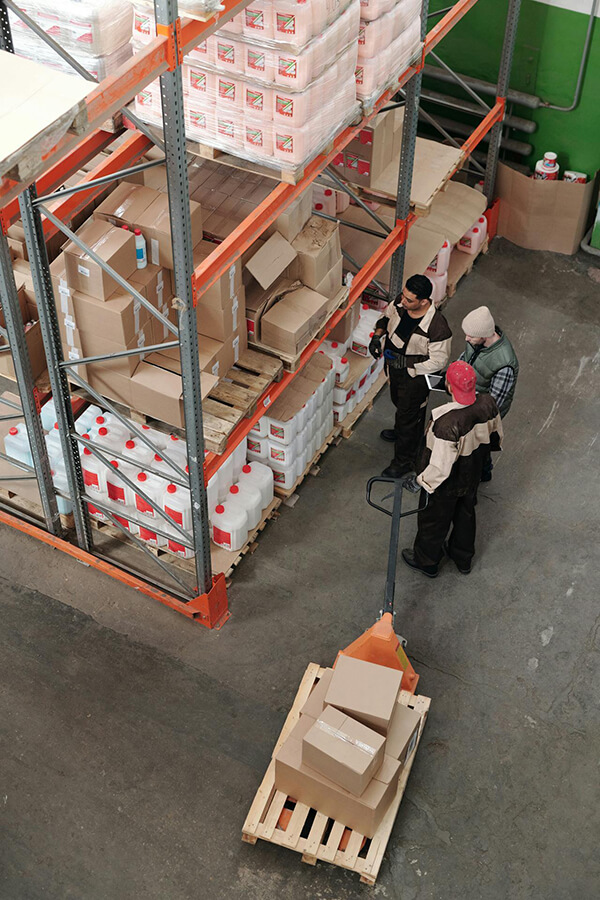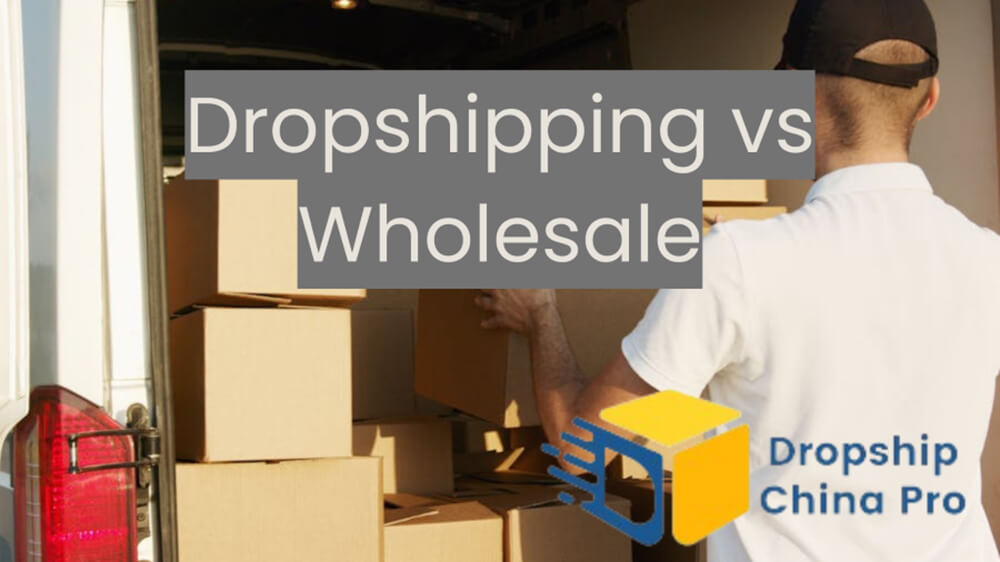If you’re looking to start a business, two popular business models you may be considering are dropshipping and wholesale.
But what exactly do these terms mean, and how do the models compare? This article will provide an in-depth look at dropshipping and wholesale, including how they work, their pros and cons, and the key differences between the two approaches.
We’ll also offer guidance on choosing the right ecommerce model for your business goals and resources. Whether you’re an aspiring entrepreneur or an existing business looking to pivot online, read on to learn if dropshipping or wholesale is the better fit for scaling your company.
What Is Dropshipping?
Dropshipping is a retail method where you don’t keep the products you sell in stock. Instead, when someone buys something from your online store, you order it from a supplier who ships it directly to the customer. At no point do you see or handle the products.
Here is how dropshipping works:
- A customer places an order on a dropshipping store’s website.
- Upon receiving the order, the store owner purchases the item from a third-party supplier.
- The supplier then packs and sends the product to the customer.
- The customer receives the order as if it came directly from the dropshipping store.
Some key benefits of dropshipping include:
- Low startup costs – You don’t have to buy any stock before you start selling, which is why dropshippers can launch an online store with very little money.
- Easy scalability – You can add new products without having to buy and store inventory, making it easy to scale up your product catalog.
- Low overhead – Without a warehouse and inventory costs, overhead expenses are quite low, which makes droppshipping a great option for anyone on a tight budget.
- Flexible location – You can run your dropshipping business from anywhere with an internet connection, as no physical storefront is required.
However, there are also some potential drawbacks:
- Lower profit margins – After paying the wholesale supplier, profit margins can be slim.
- Lack of quality control – You have no control over product quality since items ship directly from the supplier.
- Shipping complications – Since you don’t control fulfillment and shipping, delays and errors can happen.
- Inventory issues – If the supplier has stockouts, you cannot fulfill orders, which can lead to complaints.
What Is Wholesale?


Wholesale is when a business purchases products in bulk directly from a manufacturer or supplier at a discounted price and then resells those products to customers.
This is how it works:
- A wholesaler sources products in large quantities from manufacturers, often negotiating discounts based on volume.
- The wholesaler stores the inventory in their own warehouses. This requires upfront capital to purchase inventory.
- When a customer places an order, the wholesaler packages and ships the products directly to the customer from their warehouse.
- The customer receives the shipment and sells the products to their own retail customers.
Some key benefits of wholesale include:
- Higher profit margins – By buying in bulk directly from suppliers, wholesalers pay less per unit and can charge more than the product cost.
- Control over shipping and inventory – With their own warehouse, wholesalers can quality check products and optimize delivery.
- Established supplier relationships – Regular bulk purchasing allows wholesalers to develop partnerships with manufacturers.
The disadvantages of wholesaling include:
- Large upfront costs – Wholesalers need capital to purchase inventory in bulk and invest in warehousing.
- Inventory management – Monitoring and storing large product quantities requires significant oversight.
- Space requirements – Housing bulk inventory necessitates leasing or owning a large facility.
What Is the Difference Between Dropshipping and Wholesale


Startup Costs
Dropshipping and wholesale have very different cost structures. With dropshipping, the startup costs are quite low since you don’t need to purchase and hold inventory.
You can launch an online store at the cost of a website and marketing. Ongoing costs are also minimal – you only pay for website hosting, marketing, and order processing fees.
Wholesale requires a much larger upfront investment to purchase inventory in bulk. You need enough working capital to handle ordering, shipping, and storing your inventory.
Ongoing costs are higher too, as you have to manage purchasing, warehousing, shipping, returns, and more for your inventory. However, wholesale benefits from economies of scale, where larger order volumes result in lower per unit costs. The more inventory you sell, the lower your average costs become.
Inventory
With dropshipping, the supplier handles inventory and shipping. This means the dropshipper doesn’t need to store or manage any inventory. The supplier takes on all inventory risks and costs.
The dropshipper simply forwards customer orders to the supplier, who then ships the products directly to the customer. This makes inventory management easy for the dropshipper. However, the supplier may sometimes run into out of stock issues if inventory isn’t managed properly on their end.
With wholesale, the retailer purchases inventory upfront from the supplier. The retailer must handle warehousing and shipping the products to customers. This means the retailer takes on all inventory risks and costs.
The retailer has to properly manage and forecast inventory to avoid running out of stock on popular items. However, they have more control over inventory levels when buying wholesale, compared to being at the mercy of the supplier’s stock with dropshipping.
Order Fulfillment
Order fulfillment is where you’ll notice one of the biggest differences between dropshipping and wholesale.
With dropshipping, the supplier handles all aspects of order fulfillment. As soon as you receive an order, you simply forward it to your supplier, and they take care of processing, packing, and shipping the order directly to your customer. The supplier handles all shipping costs as well. This makes order fulfillment incredibly easy for dropshippers.
With wholesale, you are responsible for order fulfillment. You have to process, pack, and ship all orders yourself from your own inventory. This means you need space to store inventory, materials to pack orders, and you have to handle all shipping costs. You’ll also need to manage order tracking and customer updates.
Product Selection


With dropshipping, the retailer does not hold any inventory. Instead, the retailer sources and vets products to sell from a wholesaler’s catalog. This allows the dropshipper to offer a wide variety of products without having to purchase and store them.
Dropshippers have the flexibility to niche down and curate a specific product selection for their target customer. Or they can choose to offer a wide range of products to serve multiple interests. Since they don’t own the inventory, it’s easy to test out different products.
Wholesalers, on the other hand, purchase inventory in bulk from manufacturers. They have to be more selective in the products they source, focusing on proven sellers in predictable demand. Carrying too much dead stock can hurt their bottom line.
Another consideration is private label versus branded goods. Dropshippers typically sell branded goods produced by other companies. Wholesalers have the option to sell branded goods or develop their own private label products.
Private labeling allows more control over the product and branding. But it requires more upfront investment and risk.
Branding & Marketing
Wholesalers have existing inventory, so they may already have an established brand identity. This can make marketing easier as you have branded assets, packaging, etc. However, you’re limited to promoting the brands and products you carry.
In this model, you have more control over product quality and presentation to align with your brand. However, if you carry a diverse inventory that doesn’t fully match your brand identity, you may find it more challenging to properly market yourself.
Wholesalers can use a mix of digital marketing, events, partnerships and other channels to promote their brand and products. Their physical location also establishes trust and authority.
With dropshipping, you don’t hold any inventory, so you have more flexibility in branding. You can create a brand identity from scratch without being tied to certain products or suppliers. Your website and marketing materials can establish your brand’s voice and style.
However, since you don’t manufacture products, it can be harder to control product quality and create a cohesive brand experience. Effective marketing is important for dropshippers to drive traffic and conversions. You need to focus on digital marketing channels and build an audience that trusts your curation and recommendations.
Supplier Relationships
Dropshipping relies heavily on strong relationships with suppliers. A good relationship can lead to better pricing, faster shipping, and priority support. However, finding reliable dropshipping suppliers can be challenging, and there is a risk of supplier issues affecting your business.
Wholesale requires building relationships with manufacturers and suppliers, but these relationships can be more stable and long-term. You have more control over your supply chain and can negotiate better terms based on your order volumes.
Scalability
Dropshipping is highly scalable because you don’t need to manage inventory or worry about warehousing. You can quickly add new products to your store without the need for large capital investments. This makes it easier to expand your product line and reach new markets.
Wholesale, on the other hand, can be more challenging to scale due to the need for significant upfront investment in inventory and storage space. As your business grows, you’ll need more warehouse space and a more robust logistics operation to handle increased order volume.
Control Over Customer Experience


With dropshipping, the retailer has limited control over the customer experience since the supplier handles order fulfillment. This can lead to inconsistencies in packaging, shipping times, and product quality. Any issues or delays from the supplier can negatively impact the customer’s experience and the retailer’s reputation.
In contrast, wholesale allows the retailer to control every aspect of the customer experience, from packaging to shipping. This can lead to a more consistent and branded customer experience. The retailer can ensure quality control and provide faster shipping times, which can improve customer satisfaction and loyalty.
Start Dropshipping with Dropship China Pro
If you’re new to dropshipping, Dropship China Pro is here to make the process simple and efficient. Finding the most profitable niches or the best products is only part of the equation. You also need a reliable dropshipping supplier.
That’s where we come in. We provide high-quality products at discounted prices, ensuring your online store has the best chance for success. Our worldwide fulfillment covers North America, Australia, Europe, and the United Kingdom, so your customers receive their orders quickly and reliably.
Plus, we offer branding and customization options to help your store stand out. With Dropship China Pro, you can focus on growing your business while we handle the rest.
Verdict
So which model is better? It depends on your goals and ideal business. Dropshipping is great for testing products and launching online stores quickly. It’s easy to scale and doesn’t require warehousing space.
Wholesale needs bigger upfront investments but enables better margins, branding, packaging, and customer experience. It also allows greater quality control. However, scaling requires expanding warehousing and inventory.
Overall, aspiring ecommerce entrepreneurs should carefully weigh the pros and cons of each model. Consider costs, fulfillment, branding, profits, and other factors based on business goals.
With the right research and planning, both dropshipping and wholesale can lead to successful, scalable online retail businesses.


I am Komo, a marketing specialist with a strong focus on dropshipping. Over the past two years, I have gained valuable experience and expertise in the dropshipping industry. I have successfully implemented various marketing strategies to drive traffic and optimize conversions for dropshipping businesses. My passion for the industry has allowed me to stay updated with the latest trends and best practices, ensuring effective results for the companies I work with.




